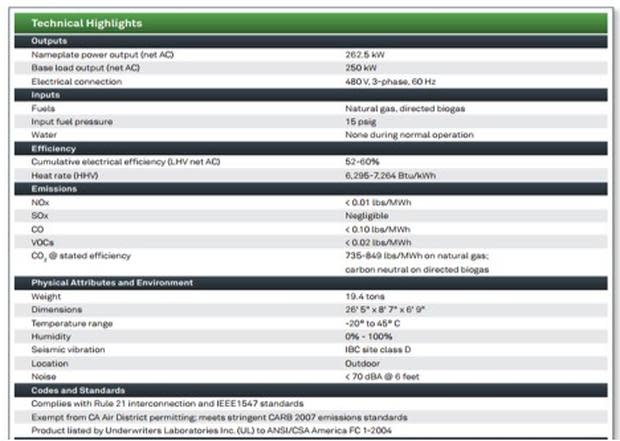CenturyLink is bullish on fuel cells for data centers

Figure A
Image courtesy of CenturyLink
CenturyLink just commissioned the fuel-cell powered expansion of the company's Irvine OC2 facility in southern California. The two megawatt addition brings the facility's total to 12 megawatts, and fuel cells make up 500 kilowatts of the total. The CenturyLink announcement mentions the Irvine facility incorporated two firsts: OC2 is the first data center in southern California to use fuel cells, and it is the first multi-tenant data center in the country to use fuel-cell technology.
Other companies investing in fuel-cell tech include Apple, eBay, and Microsoft. However, colocation and multi-tenant commercial data centers have avoided fuel cells. I asked CenturyLink's David Meredith, senior vice president and global general manager, and Drew Leonard, vice president of global colocation, what the concern was.
Both gentlemen say the newness of fuel cells and that the technology lacks operational maturity (track record) are two hindrances. Potential clients want more than money-back assurances that their services will remain online 100% of the time as guarantees, because money does little to assuage clients with mission-critical operations where outages could impact lives. Meredith and Leonard also mentioned that more often than not these same potential clients are making inquiries about whether CenturyLink is investing in renewable energy and resources, adding, "Before long it will no longer be a question, but a request."
Meredith says CenturyLink considers the Irvine facility a "proof of concept" data center. Tenants need not worry -- the data center has three power sources: Southern California Edison grid power, fuel cells, and N + 1 backup generators. The facility is also Tier III concurrently-maintainable and design/construction-certified by the Uptime Institute.
Bloom ES-5710 Energy Server
CenturyLink is using Bloom Energy's model ES-5710 Energy Server fuel cells similar to the system shown in Figure A. The specifications from Bloom in Figure B mention the base-load output per server is 250 kW at 480V, 3-phase, 60 Hz. Of particular interest and adding perspective is knowing that each 26'5" x 8'7" x 6'9" unit weighs 19.4 tons.
Figure B

Specs for Bloom Energy's ES-5710 Energy Server
Image: Bloom Energy
What is an energy server?
Bloom explains that each fuel cell can produce about 25W -- enough to power a light bulb -- and that each energy server consists of thousands (250 kilowatts divided by 25 watts equals 10,000 fuel cells) of Solid-Oxide Fuel Cells (SOFCs).
The cells are stacked sandwich-like along with metal interconnection plates. Bloom adds that a few stacks about the size of a loaf of bread can power most homes. The stacks are then combined into what Bloom calls "power modules," which along with fuel (natural gas) and electrical connections make up a complete stand-alone energy server. For additional power, like CenturyLink's system, energy servers are grouped side by side.
More on SOFCs
Fuel cells have been around a long time -- Bloom states they have powered NASA space mission since the 1960s. Most of the early technology was complex and expensive, so scientists and engineers changed direction and focused on SOFC technology. This type of fuel cell is much cheaper and as a group fuel cells are one of the most efficient methods of producing electricity. Bloom advertises that the 5710 registers between 52% and 60% efficiency. The only method that is more efficient is hydroelectric power generation. See an article from the San Jose Mercury News that explains how a Bloom SOFC creates electricity.
Since earlier fuel-cell technology was complex and expensive, I wondered why SOFCs weren't used right from the start. The main reason is the ultra-high temperature (over 800 degrees C) required for the chemical reaction to occur. Trying to commercialize a product running that hot required new materials and designs.
How CenturyLink views fuel-cell technology
Something I found interesting was Leonard said that CenturyLink management prefers some other option than the local power grid for the primary source of electricity for the company's data centers. If it was economically feasible, CenturyLink data centers would use generator power with the local power grid being the backup source of power.
That's one reason people at CenturyLink are interested and willing to spend time and money on fuel-cell technology. If everything turns out as expected, fuel cells could potentially serve as the primary power source at CenturyLink data centers.

